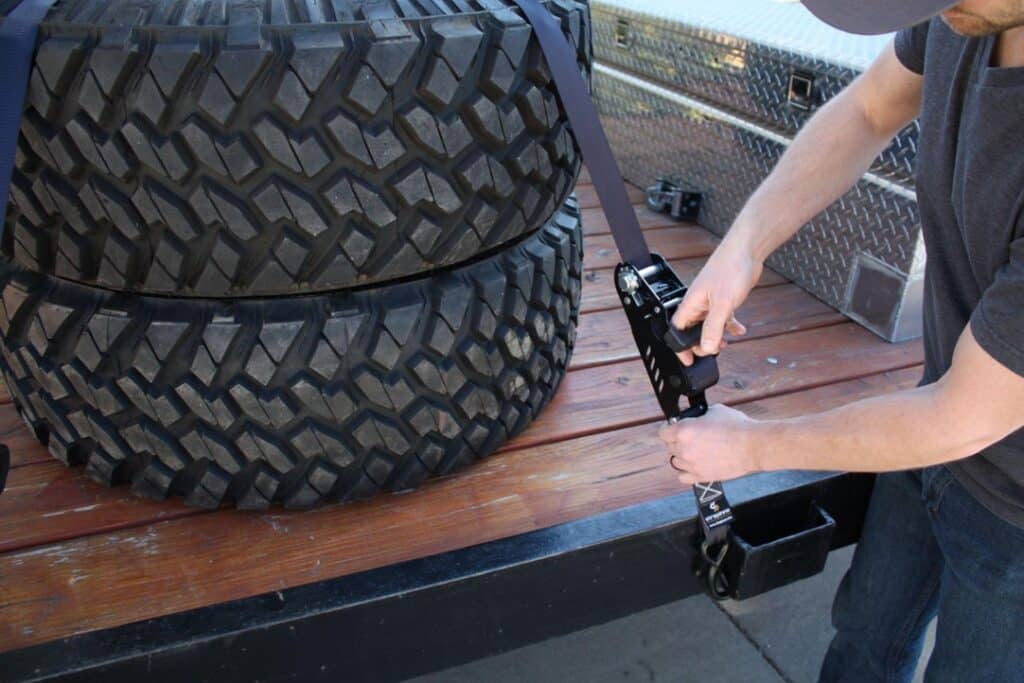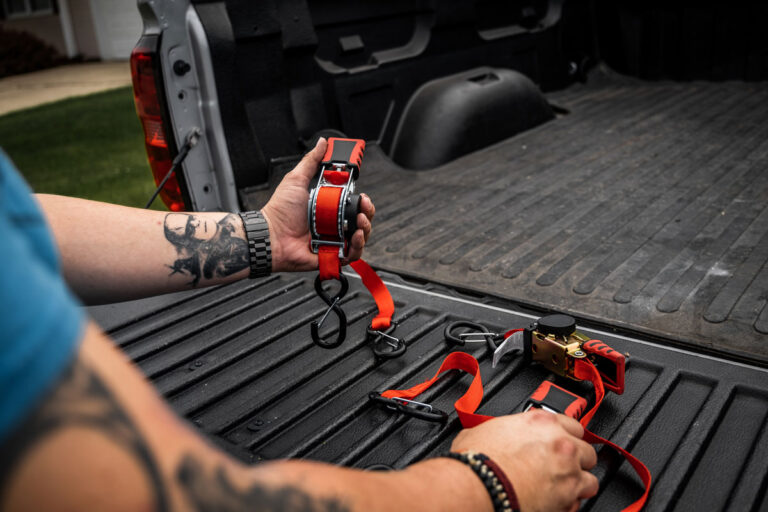Easy Guide to Using Retractable Ratchet Straps
Here’s a quick guide with step-by-step instructions and troubleshooting tips for using retractable tie-down straps.

Alright, listen up. If you haul anything in your truck or trailer, you already know the headache of dealing with straps that tangle, fray, or just don’t hold. Retractable ratchet straps? They are a game-changer. Fast, safe, and they actually make sense. You can secure motorcycles, boats, or even your kid’s new swing set without losing your mind. I’m gonna walk you through how to use them the right way, so you don’t end up on the side of the road watching your load bounce down the highway.
Read more: Ultimate Guide to Retractable Ratchet Straps (2025 Edition)
Why You Should Use Retractable Ratchet Straps
Here’s the deal. Regular straps are fine if you got time and patience, but who does? (cus I know I don’t!) Retractable ratchet straps save you headaches.
- Saves Time: Pull, hook, ratchet, done. No wrestling a mess of webbing.
- Keeps Cargo Safe: Less slack, less shifting, fewer things breaking.
- Protects Your Stuff: No pinching, no scratches, no surprises.
- Easy Storage: Just let it retract, throw it in the toolbox, and forget about it.
- Works Everywhere: Truck, trailer, boat, ATV. You name it.
Safety First: Protecting Yourself and Your Cargo
Before we get started, it’s important to prioritize safety. Follow these essential precautions:
- Regularly inspect the strap and ratchet mechanism for any signs of damage or wear.
- Make sure the tie-downs’ breaking strength (BS) and working load limit (WLL) are suitable for your intended load.
- Consider wearing appropriate safety gear, such as gloves and safety glasses, to protect yourself when transporting heavy-duty equipment.
- Keep your body clear of the strap during tensioning and release to avoid potential injuries.
- Sharp corners will chew your strap. Throw down padding if needed.
- Wet, icy, or oily surfaces can sneak up on you. Check tension mid-trip.
Remember, retractable ratchet straps are not designed for lifting purposes. They are solely for securing loads during transportation.
Read more: 5 Common Mistakes to Avoid with Retractable Ratchet Straps
How to Use Retractable Ratchet Straps
This part is simple, so pay attention.
Step 1: Pull It Out
Grab your strap and let it out until it reaches the anchor points on your load. Make sure it isn’t twisted, or you will spend the next ten minutes untangling yourself.
Step 2: Hook It Up
Attach both hooks to solid anchor points. Give the strap a little stretch so it lays flat across your load. No loops, no slack.
Step 3: Ratchet It Tight
Crank it until it’s tight. Don’t go overboard, cus this isn’t a wrestling match. Tight enough to hold, not so tight that it looks like you’re trying to lift a car.
Step 4: Lock and Inspect
Make sure that ratchet clicks in place. Shake your cargo a bit. If it moves, tighten a little more.
Step 5: Release Like a Pro
When it’s time to unload, slowly release tension. Let it retract neatly. Don’t just let it snap back like a rubber band cus that’s how you lose fingers.
Tip: Try it a couple times on lighter stuff before moving the big loads. Learn the feel of it. Trust me, it matters.
Understanding Strength Ratings
Every strap comes with two numbers: Breaking Strength (BS) and Working Load Limit (WLL). Know them.
- Breaking Strength: Absolute max the strap can take before it snaps.
- Working Load Limit: Safe everyday limit. Usually about a third of the breaking strength.
Tip from experience: Always check the Working Load Limit (WLL). That number ain’t printed there just for decoration.
For a more detailed guide to BS and WLL: A Detailed Guide to Breaking Strength vs Working Load Limit
Storage, Maintenance & Fixes
You want these things to last. Here’s the straightforward way:
Storage
- Fully retract straps after each use.
- Keep them dry and out of direct sun. Sun is like kryptonite for webbing.
- Hang them or stash in a toolbox, just don’t toss them in a pile.
- Wash off dirt or salt with mild soap and water if they get grimy.
Maintenance & Fixes
- Sticky retraction: Lightly oil the mechanism and work it a few times.
- Frayed webbing: Replace it. Don’t even think about patching it.
- Cargo shifting: Adjust straps evenly.
- Rusty hooks: Wipe down with oil. Prevention beats replacement every time.
Keep a small kit in your vehicle. Soap, cloth, lubricant. It will save you grief.
Reminder: If you store them in your truck bed all summer, expect them to wear faster. Just sayin’.
Read more: Guide to Maintaining Your Retractable Ratchet Straps
Troubleshooting Tips for Retractable Tie-Down Straps
Even with the proper setup and usage, occasional issues may arise. Here are some troubleshooting tips to overcome common challenges:
- If the strap becomes twisted or tangled, stop using it immediately. Unwind and untangle the strap before proceeding.
- Check for any debris or obstructions if the ratchet handle becomes difficult to operate or jams. Clean before further use.
- Make sure the hooks are securely attached to the anchor points. If not, reattach them properly.
- Should you notice any signs of damage or wear on any part of the tie-downs, discontinue its use and replace it with a new one.
The Takeaway
Retractable ratchet straps make your life easier, safer, and less stressful. Take the time to learn them, respect the limits, and maintain them properly. Before you know it, you’ll be securing cargo like a pro and wondering why you haven’t met these straps sooner!







